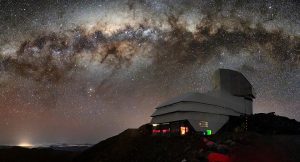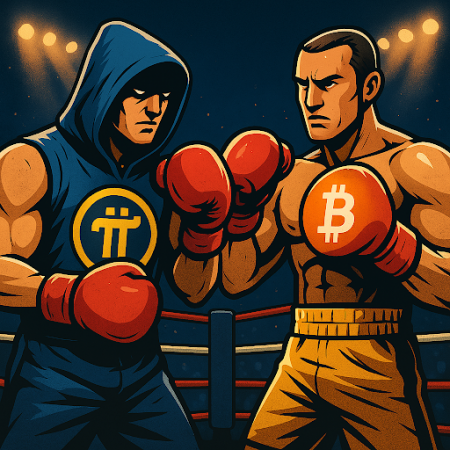Technology has made all of us hungry for quick fixes like app updates that fix bugs. Unfortunately….
While blocking out the sun to cool down the earth may sound crazy to a lot of people, that’s exactly what solar geoengineering is, and apparently, it has become a “respectable” idea of late. In addition to the European Commission and the US government, solar geoengineering has also become a major focus point for the Climate Overshoot Commission and the UN. What’s also strange about this particular branch of science is that it’s almost exclusively being funded and pushed down our throats by the white, wealthy billionaires of the global North, who unsurprisingly don’t even account for a fraction of a percent of the global population. To quote Jennie Stephens, a professor of sustainability science and policy at Northwestern University “It’s quite a patriarchal, colonial perspective.”

Solar geoengineering
Though many cultures around the world have rich traditions of volcanic mythology, they’re typically all connected to Gods of fire and wrath that need to be appeased or they will literally rain down hell on you. That being said, trying to replicate what a volcano does and imagining that “it’s good for the planet,” sounds both foolish and extremely dangerous. Unfortunately, however, geoengineering draws inspiration from the aftermath of past volcanic eruptions where the ash clouds that lingered in the air actually cooled the plant down by about 0.6 degrees C for a couple of years. The theory is, that if we skip the volcanic eruption part and just spray sulfur into the atmosphere, we could have the same cooling effect without the lava, smoke, and hellfire.
This process is just one form of solar geoengineering (others include cloud brightening and solar reflective space shields), albeit the most popular, and is referred to as SAI or Stratospheric Aerosol Injection. Initially suggested by a Russian climatologist in 1974, this particular idea has gained a lot of traction after being backed by the likes of Bill Gates and George Soros who are probably two people in the world that climate change will affect the least. In addition to Jeff Bezos pumping millions into researching the effects of SO2 in the atmosphere, 2022 saw a start-up called Make Sunsets headed by Luke Isleman conduct the first-ever US-based tests of SAI. The Sulfur Dioxide was released into the atmosphere above Nevada via balloons (after the Mexican government shut down its tests in Mexico).

(Image Credit: Wikimedia Commons)
What could possibly go wrong?
Now the thing with messing around with the climate is that the weather really doesn’t care about boundaries or borders, and that’s putting it mildly. Any change in temperature or rainfall in one country could have disastrous effects on another country on the opposite side of the planet. A simple out-of-season rainfall can have disastrous effects on crops like rice, cotton, maize, and mangoes. A dry season would be even worse with people running out of water and crops and animals wasting away in the scorching heat. In addition to disturbing the rain cycle or even possibly canceling the Indian monsoon, the sprayed aerosols in the stratosphere only last a couple of months and need to be replenished. And what if we choose not to replenish them?
Termination shock is what will happen if we suddenly stop spraying aerosols and we go from cool back to scorching temperatures in a matter of weeks. Additionally, according to a study published in the journal Nature, while volcanic ash clouds do cool down the earth (a bit), they also reduce the amount of light received by plants on the planet, lowering crop yields. The study concluded that while dimming the sun with aerosols might indeed lower crop losses due to high temperatures, the diminished light would offset any so-called “gains” enough to render the entire process useless. The study also points out that while the cooler temperatures would make for bigger-sized plants, the decreased photosynthetic activity would mean lesser edible material on each plant.

Hacking the planet
Technology has made all of us hungry for quick fixes like app updates that fix bugs. Unfortunately, however, sometimes there aren’t any quick fixes and we may just need to change our ways for the planet to get cooler. With regard to spraying aerosols like sulfur, calcium carbonate, and diamond dust into the air, there’s no telling what will happen when that stuff comes down as rain or gets in our lungs when we breathe. Trying to dim out the sun to make up for our dependence on high-emitting non-renewable sources of energy sounds a lot like pissing in your pants to stay warm, it might feel good for a few seconds but a lot of regret will soon follow.
In case you missed:
- California startup develops app to sell sunshine at night
- From Fridge to Fusion Reactor, How Mayonnaise is Facilitating Nuclear Fusion
- Scientists have stored the human genome on a Kryptonian crystal
- China launches world’s first AI-powered underwater data centre!
- How AI Is Helping Restore the World’s Coral Reefs
- Researchers develop solar cells to charge phones through their screens
- Having two left thumbs may no longer be a bad thing
- What Is Electronic Soil?
- A Glowing Plant Could Be Your New Night Lamp for $29
- Could the Future of Communication Be Holographic?









